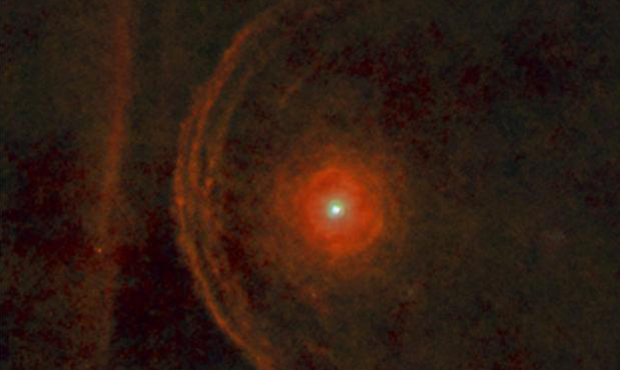Is Orion constellation star Betelgeuse about to go supernova?
Jan 8, 2020, 2:00 PM | Updated: 2:06 pm

(ESA Photo)
(ESA Photo)
Welcome to 2020!
There is a special star in the constellation of Orion the Hunter, which has the somewhat funny-sounding name Betelgeuse.
Hollywood helped to create that humor, but the actual star Betelgeuse is a massive orange-red supergiant star, thought to be some 640 light years away.
The name comes from the Arabic meaning for “the armpit of Orion” and it is a most amazing star, indeed. The size of this star is also quite amazing, too.
The radius of the star would extend outward to at least the orbit of Jupiter and is a long period variable star.
As stars age, they consume all of the hydrogen as fuel and move on to the consummation of heavier elements. At the end of these fusion reactions, the stars will implode and release vast amounts of energy as supernova.
Observers around the world and even folks like us are noticing that Betelgeuse has been dimming rather rapidly!
Betelgeuse was the 10th-brightest star in the night sky and the rapid dimming has now placed it 21st – all this over a period of two months’ time.
For the more advanced observers out there, Betelgeuse checks in at visual magnitude +1.4 or +1.5.
That is noticeably faint, even if Betelgeuse is a known variable star, with two distinct periods of variability – a cycle of 5.9 years and a shorter secondary period of 425 days.
With a distance of some 640 light years, the light you see tonight left the star in the year 1380 A.D.
Betelgeuse was the first star, other that the sun, to have its diameter measured. The star is huge and makes our sun look like a pea next to a beach ball.
Astronomer William Herschel first noted the star’s variability in 1836 and the star has gone through many ups and downs with its changing brilliance.
Betelgeuse has a mass of 12 times the sun and may be upwards of 767 million miles in diameter.
If you look at how far light travels in an hour (670,616,629.38 miles), this means that light takes over an hour to travel the diameter of the star itself!
Here is a finder chart for locating Betelgeuse in our Arizona skies!
Does the sudden dimming mean that Betelgeuse is about to go supernova?
Probably not, but astronomers are not sure either!
If Betelgeuse did implode, what would we see here on Earth?
Some say that the star would shine with the luminosity of nearly the full moon. This may last for a month or two and get the attention of the world population.
There has not been a major supernova event close to us in the Milky Way since the great 1604 supernova.
We are due for one, as these events usually occur at least once every 500 or so years.
Here is the best image we have of what this amazing star may look like.
In other news, the recent launch of the Space X’s Starlink satellite cluster of an additional 60 internet satellites went off just as expected.
Observers around the world are seeing a “train” of satellites moving across the night sky.
To know when and where to view these amazing objects in our Arizona skies, check out this site.
To print your own monthly star chart, click here.
To view satellites/dates/times of passage, click here.
Listen to the Dr. Sky Show on KTAR News 92.3 FM every Saturday at 3 a.m.







